When choosing dinnerware, you want to select the type that best fits your needs. In this article, we will discuss Corelle, porcelain, and stoneware in detail so you can decide which one is best for you.
Corelle, porcelain, and stoneware differ in some fundamental ways. The most important differences are how they are made, where they are made, durability, and their appearance.
Now that you know how these dishes differ continue reading to find out the specifics and pros and cons of each. We will also discuss how to test your dinnerware for toxins and the best uses for each type.
![A stack of vintage floral plates with silver teaspoons on a table near lace doilies - Corelle Vs Porcelain Vs Stoneware Differences, Pros, And Cons [Which Is Best For You]](https://kitchenseer.com/wp-content/uploads/2022/09/A-stack-of-vintage-floral-plates-with-silver-teaspoons-on-a-table-near-lace-doilies-.png)
Corelle
Not only is Corelle dinnerware made in the United States of America, but it is also environmentally friendly, extremely durable, and lightweight. New Corelle dinnerware is non-toxic and nonporous.
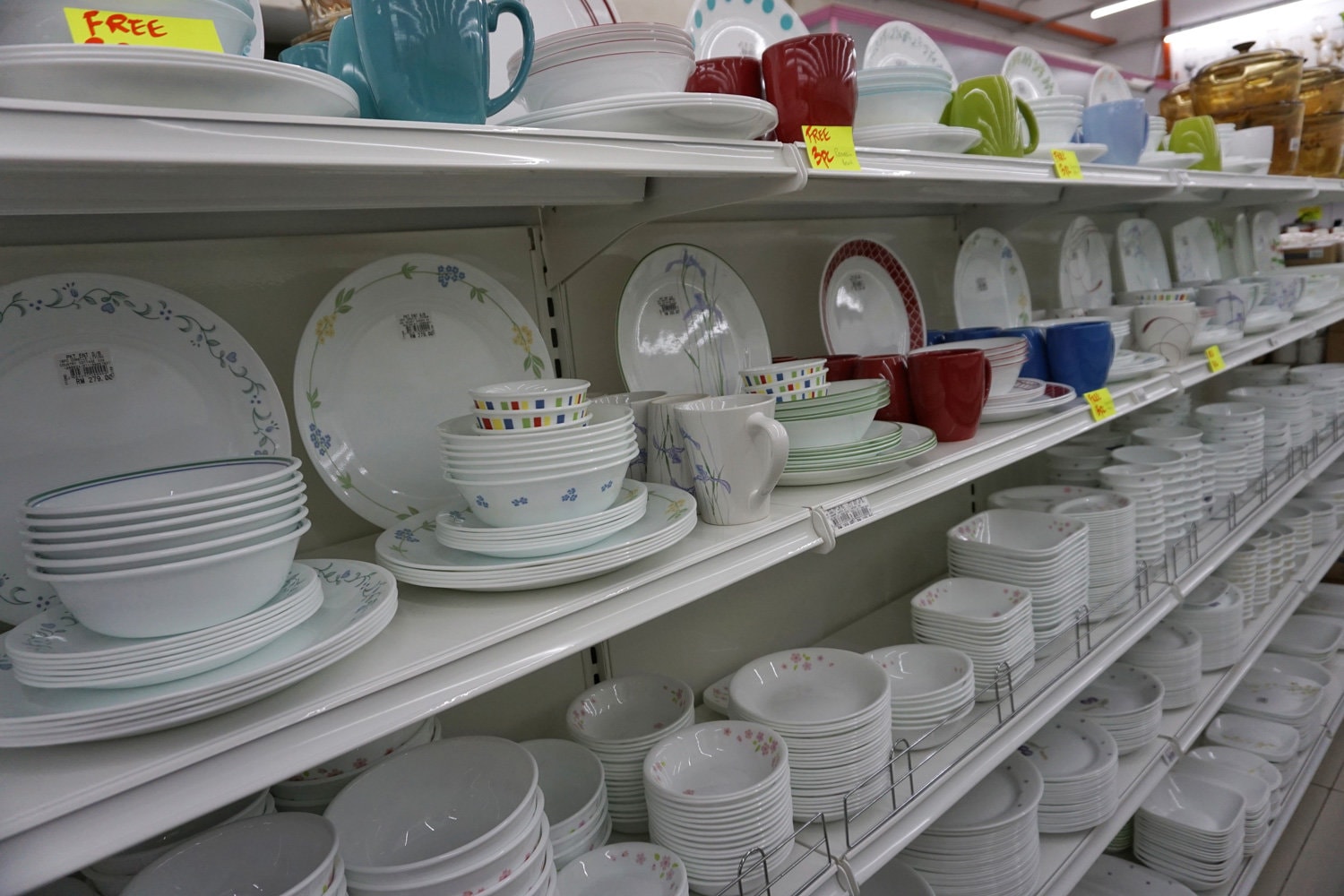
It is made of a particular type of glass called vitrelle that is made of three layers and two different kinds of glasses. It is made with recycled vitrelle and raw materials to make it more environmentally friendly.
Pros
Vitrelle glass is thinner than ceramic but more resistant to chips and breaks. This means it is lightweight and easy to handle while still offering durability.
Another benefit to Corelle dishes is that they can last over fifteen years if properly cared for.
If you need to microwave food or heat it in the oven, most Corelle dishes are heat resistant up to 350 degrees Fahrenheit.
Cons
One of the most significant risks when using Corelle dishes is that ones made before 2005 may have lead or other heavy metals. Any dishes made after this point should be safe. If you have older Corelle dishes, you shouldn't serve food on them.
If unsure when your plates were made, you can test them with a lead test kit or call the manufacturer.
Scitus Lead Test Kit
You can find it here on Amazon.
Another con is that when microwaving or heating a plate, you must ensure it is full of food. Never heat an empty or mostly empty Corelle dish, put it in an oven hotter than 350 degrees, or use it under a broiler. These extreme temperatures can make the plate shatter.
Porcelain
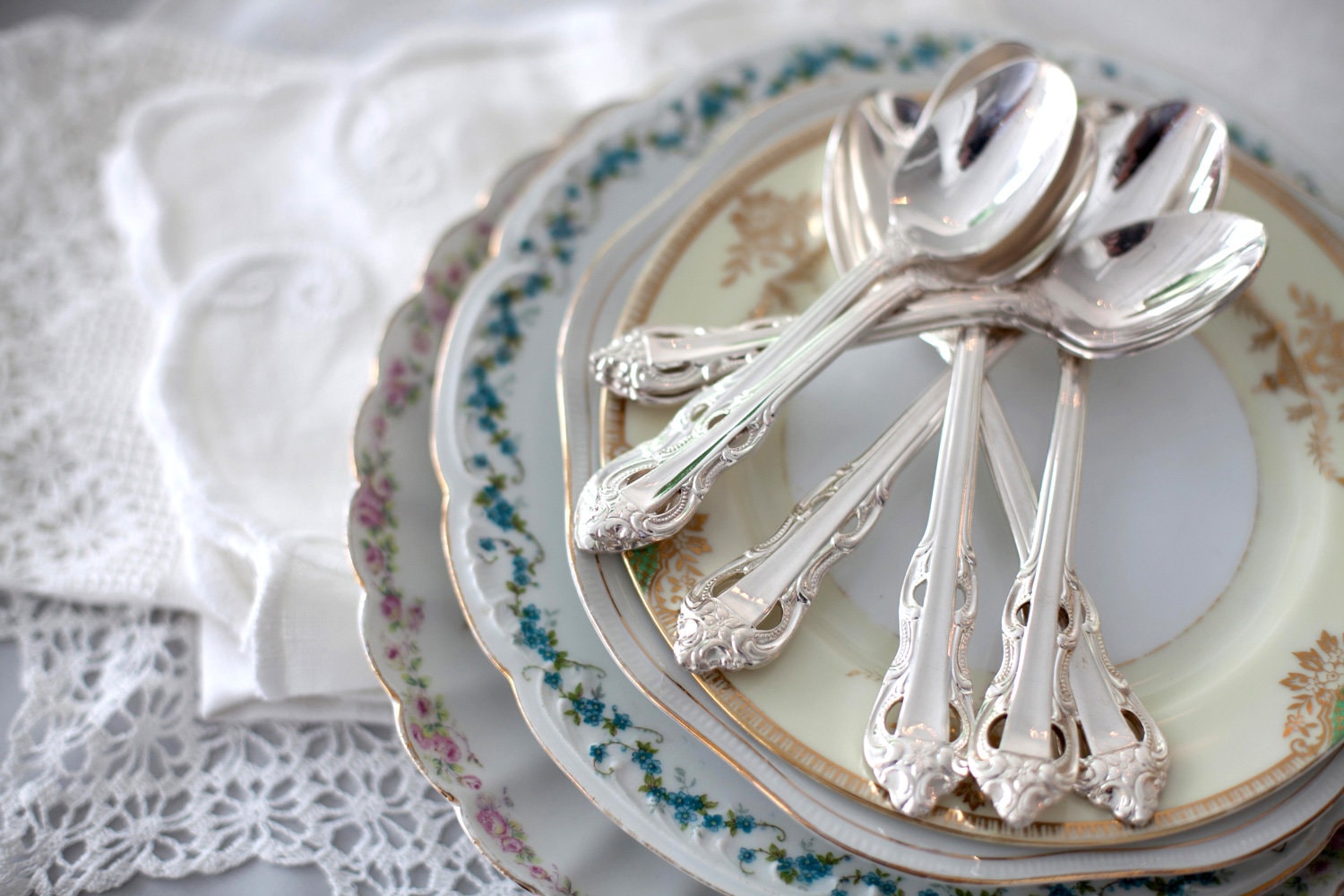
This type of dishware was first made in China before spreading to other parts of the world. Porcelain is made of feldspar, kaolin, silica, and clay heated to extremely high temperatures.
The materials used to make porcelain are more refined and of higher quality than those used in other types of ceramic. These materials cause the porcelain to have a unique transparency and brightness that most people attribute to porcelain.
Pros
Porcelain is very safe because it is more heat resistant than Corelle and won't interact with or absorb acidic foods. Another plus is that it will stand up to humidity and can be used for almost anything in the kitchen.
It is easy to clean and has a nonstick surface. These dishes have a higher density and are more crack and chip resistant than other kinds of ceramic.
Cons
The biggest thing to consider when buying porcelain is its low heat conductivity. As a result, it will take longer to heat up and cook food than other cookware.
While porcelain is more resistant to damage than other types of ceramic, it is still highly prone to damage compared to Corelle and stoneware. It is also more expensive and quite a bit heavier than Corelle dishes.
When buying porcelain, you will want to ensure it does not have a glaze that contains heavy metals. While porcelain is heat resistant, it is essential to check the manufacturer to ensure any glaze is also heat resistant.
Stoneware

Stoneware is made in many countries around the world. While it is a type of ceramic-like porcelain, it is not as refined.
It is made by taking clay pottery and cooking it at a high temperature. Stoneware is more commonly used than porcelain.
Pros
Many people prefer stoneware because it is cheaper and less susceptible to scratches than porcelain, and it is also less likely to break if dropped.
Stoneware has a unique look that changes depending on the clay used to make the dishes. It often looks rougher than porcelain and is more opaque than Corelle.
This type of cookware heats up quickly. As a result, food will cook faster and more evenly.
Cons
Stoneware dishes are extremely sensitive to temperature changes and, therefore, cannot be microwaved, used on the stove, or exposed to direct heat. Check the manufacturer's instructions to learn if you can use it in the oven.
If you want to put your stoneware in the fridge, you must wait until the food has completely cooled down to avoid cracks.
If your stoneware is fired at low temperatures and is unglazed, it can be very susceptible to breaking. Therefore, it would be best if you didn't put it in the dishwasher because it can absorb water.
When it absorbs water, it becomes prone to bacteria. For this reason, it is best to hand wash stoneware and avoid putting overly wet foods in it. Glazed stoneware usually won't have this issue.
Unlike the other two types of cookware, nonglazed stoneware is not acid resistant. Acidic cleansers, as well as citruses, must be avoided to prolong your cookware.
What Is The Difference Between Stoneware And Porcelain?
While stoneware and porcelain are both types of ceramic, they differ drastically. They have different looks, textures, makeups, and strengths.
Porcelain is more delicate and smoother than stoneware. The materials used to make porcelain are more carefully selected. Stoneware tends to be coarse and can damage other surfaces, whereas porcelain is soft.
While stoneware is sensitive to temperature, porcelain is not. In fact, porcelain is unique in that it can handle extreme temperatures because it was made in scorching conditions.
Porcelain is typically fragile and translucent and often very white. Stoneware, on the other hand, tends to be thicker. It comes in more colors and mixes than porcelain does.
Newer stoneware and porcelain look identical. One of the best ways to tell them apart is to hold them up to the light. Porcelain will be almost see-through, while stoneware will not be.
How Do You Know If Your Dishes Have Lead In Them?
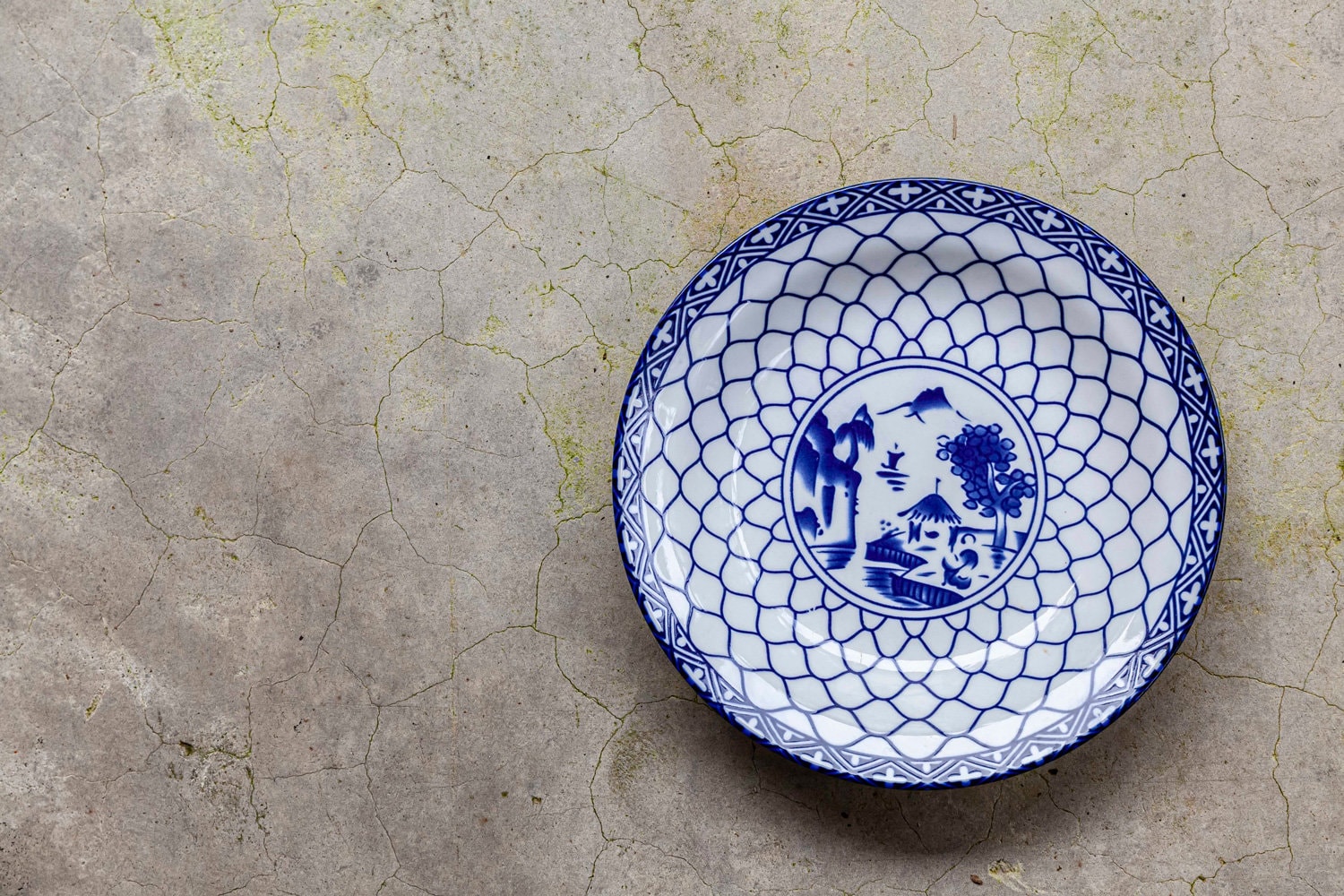
Both Corelle dishes and the glaze used on porcelain dishes can have lead, cadmium, and other heavy metals. You can check the label when buying your plates to ensure they are non-toxic.
However, if you already have some old dishes or buy some at a second-hand store, you need to buy a test kit or call the manufacturer. Remember that home test kits only detect large amounts of lead and may not detect smaller amounts in dishes.
If you see chalky residue on the glaze that can't be washed off, it probably has lead in it. Plain white dishes are often lead-free.
How Do You Test Dishes For Lead?
After buying a test, you will want to follow the directions carefully. However, lead tests are usually relatively straightforward.
Most of the tests are done by rubbing a swab against the surface of the plate, dipping it in white vinegar, and watching the swab for color changes that indicate whether or not lead is present.
Some tests do not tell you how much lead is present, just that it is. If your dishes have lead in them, you will need to either throw them out or use them as decorations only.
Which Type of Dish Is Better?
As you can see, each type of dish has its advantages. To determine which kind is best for you, you need to consider what you want to use your dishes for and your budget.
Corelle dishes are a bit more durable and lightweight, which makes them an excellent option for everyday use. However, they aren't the best for baking as they can only be heated to 350 degrees.
Corelle dishes are often cheaper than porcelain but around the same price or more than stoneware.
Porcelain is excellent for cooking and baking and isn't as sensitive to temperature changes. However, it isn't as durable as Corelle and stoneware. So, porcelain might not be your best option if you have children.
Porcelain is fancier than the other options and can make a statement at a party. However, it is the most expensive option out of the three.
Stoneware is a great option if you are on a tight budget and want cookware with an earthy vibe. However, it is not an appropriate option if you want something to bake in.
Final Thoughts
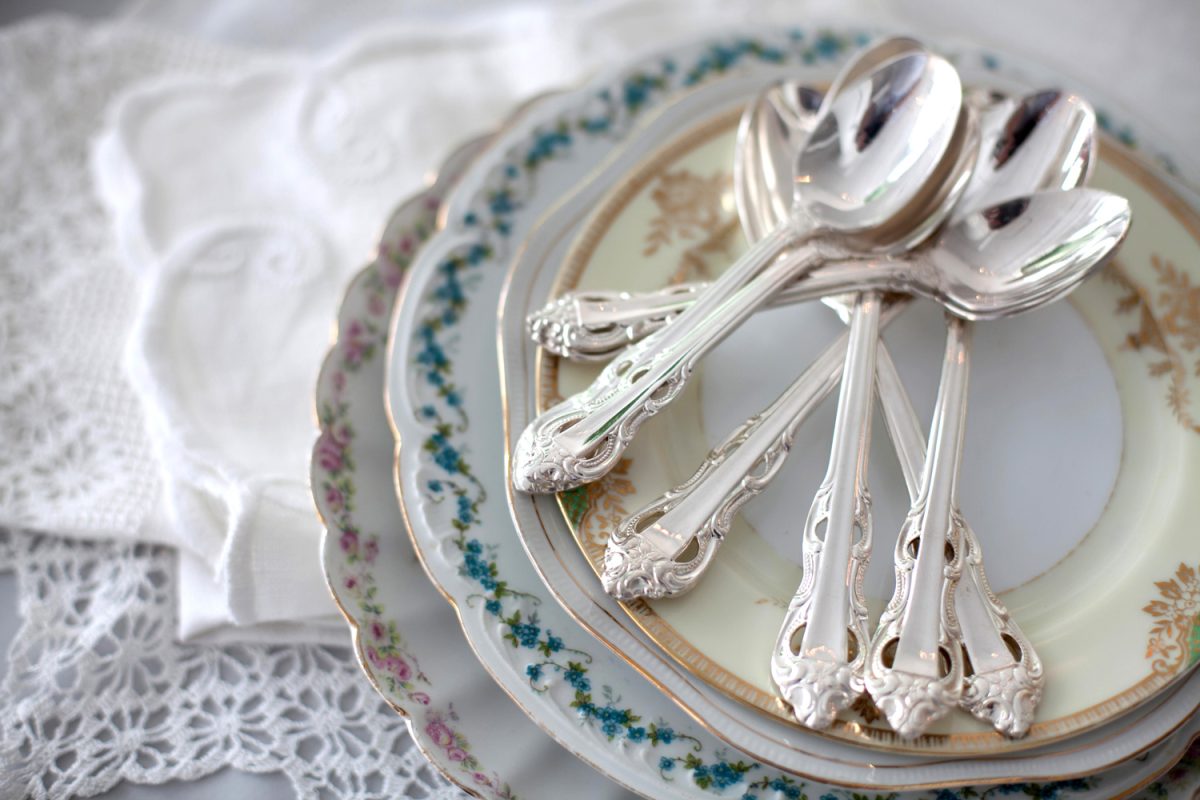
This article discussed the benefits, disadvantages, and uses of Corelle, porcelain, and stoneware. We discovered that Corelle is environmentally friendly, stoneware absorbs water, and that porcelain can withstand a lot of heat.
We hope you enjoyed this article. If you found it informative, check out the links below to explore this blog.
Do Corelle Dishes Contain Lead?
How To Remove Black Marks And Stains From Corelle Dishes



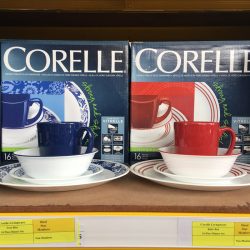
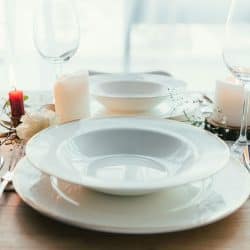
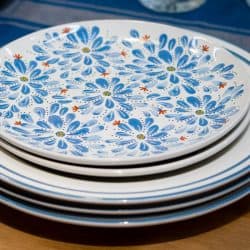
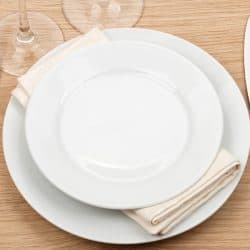
![Empty ceramic plate with brown stains isolated on dusty pink, What Stoneware Dinnerware Is Made In The USA? [11 Options To Choose From]](https://kitchenseer.com/wp-content/uploads/2022/10/Empty-ceramic-plate-with-brown-stains-isolated-on-dusty-pink--250x250.jpg)